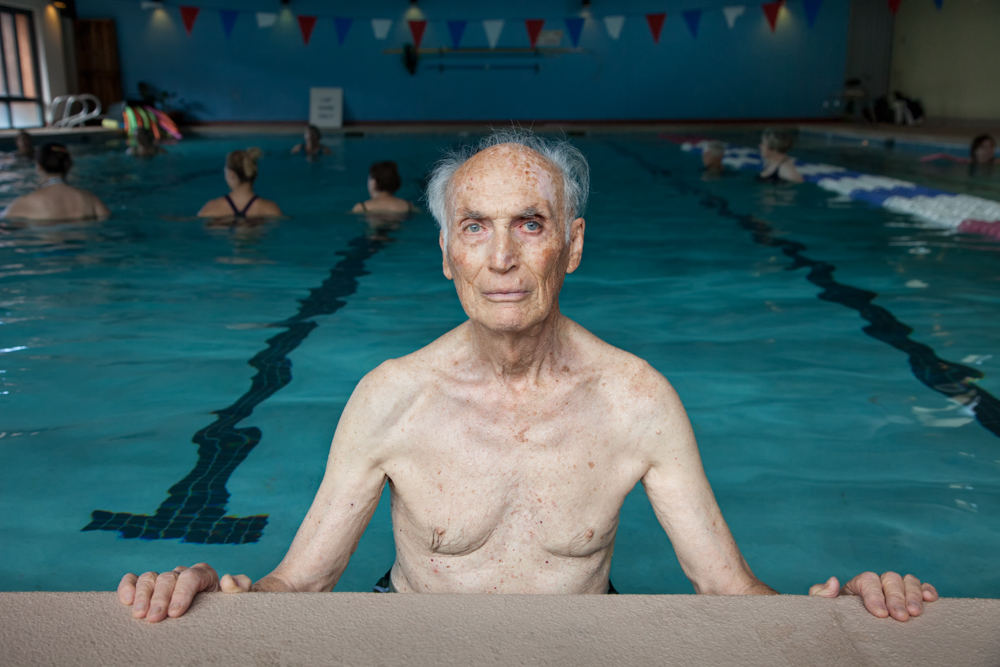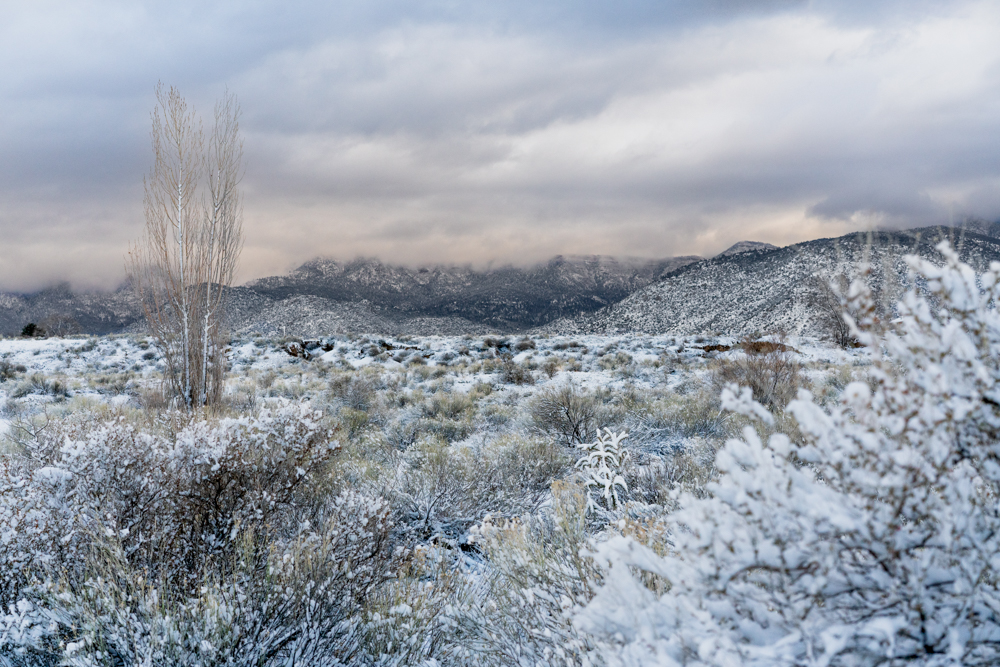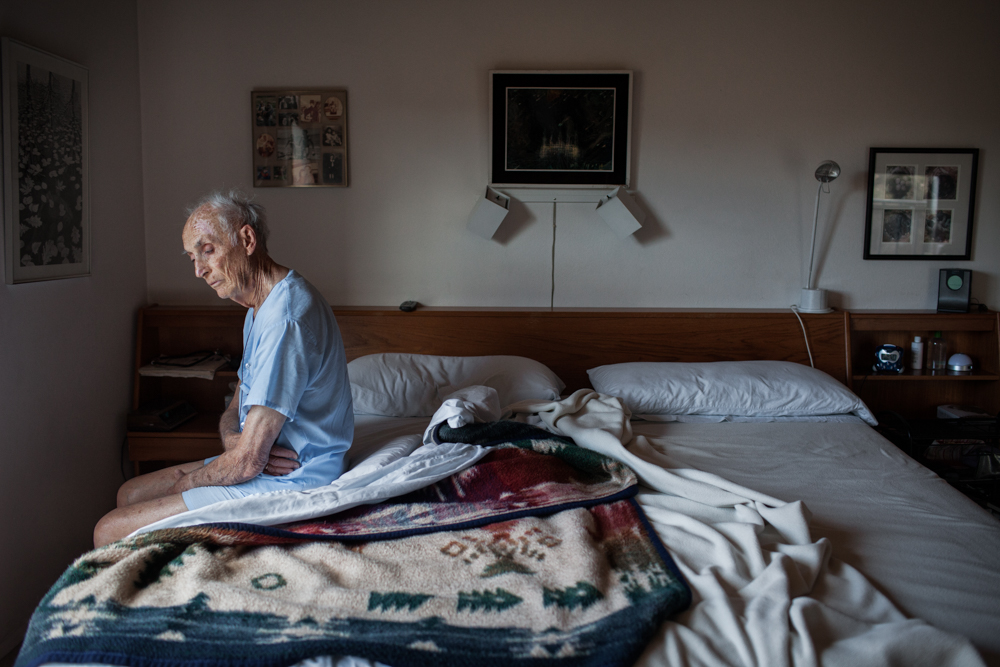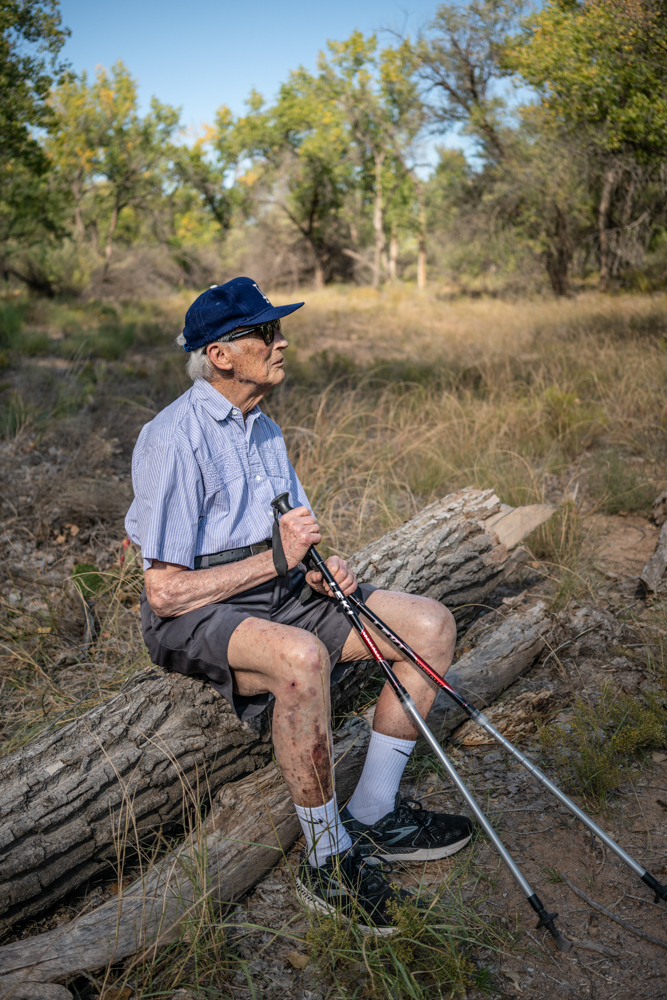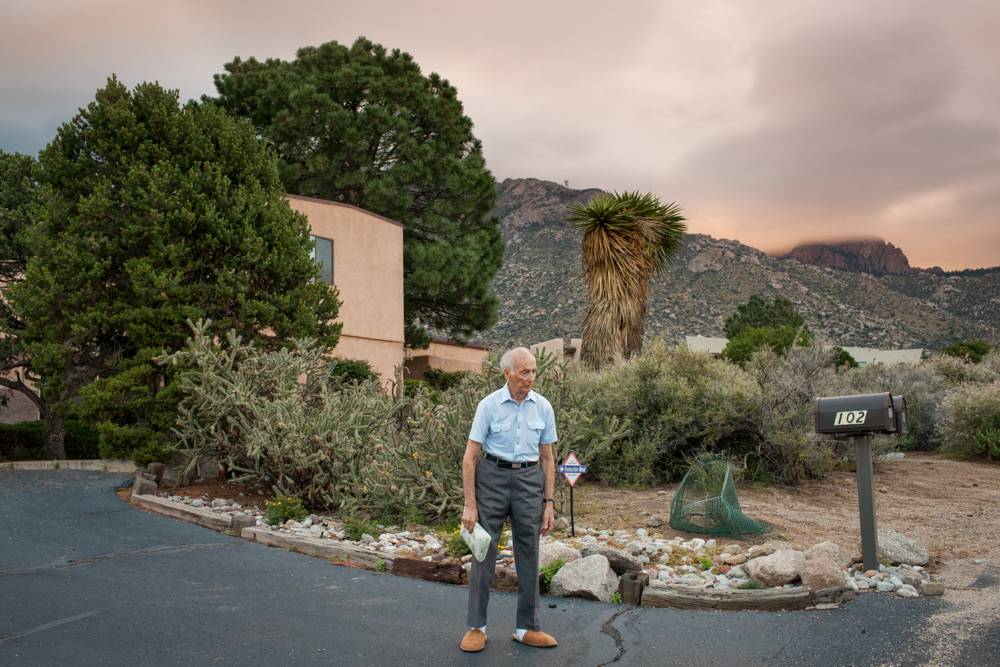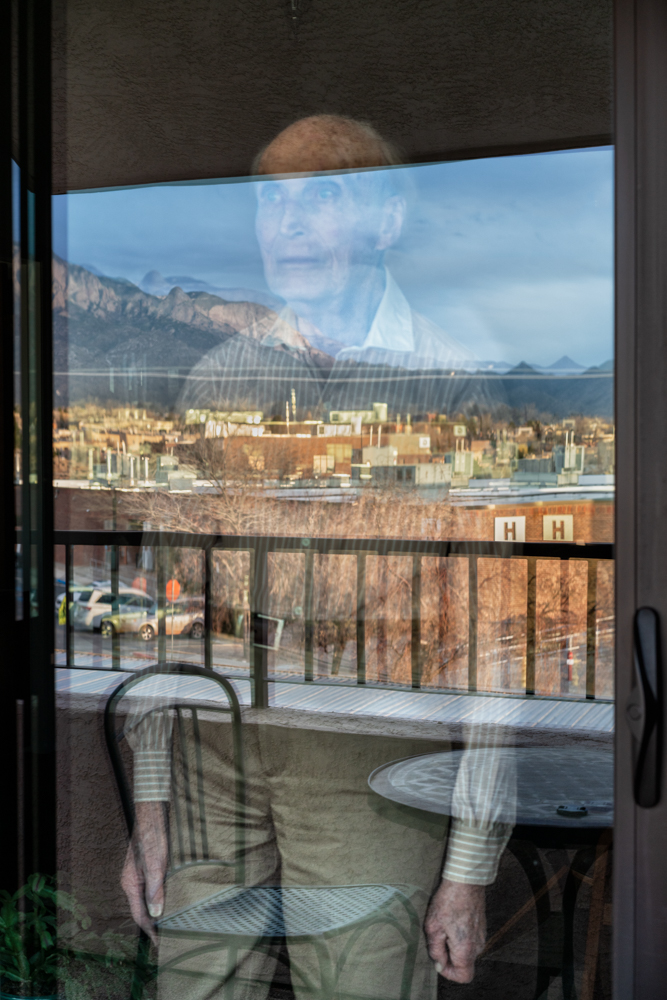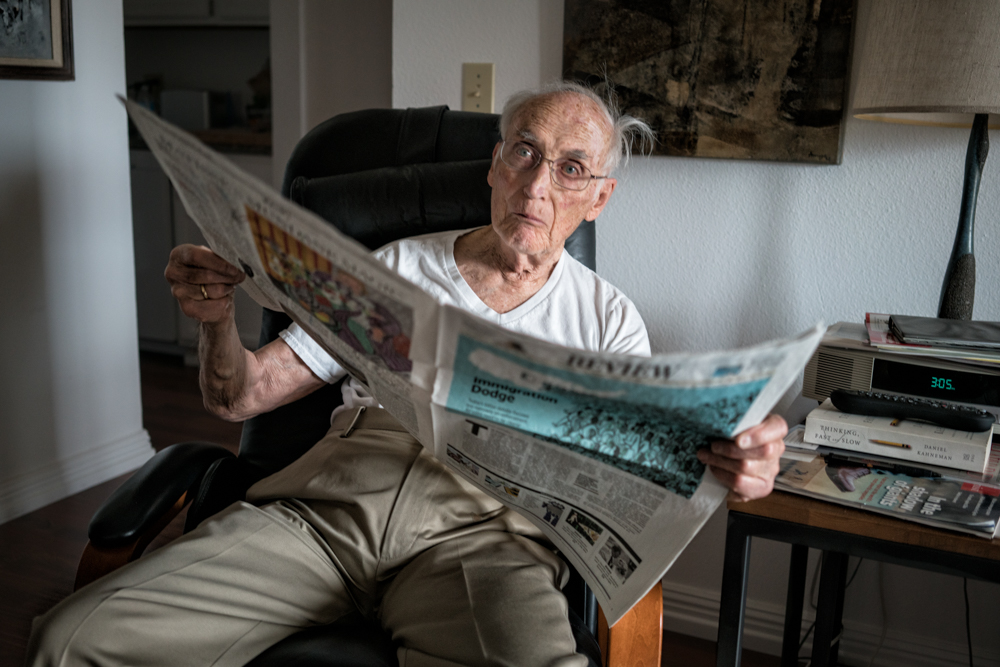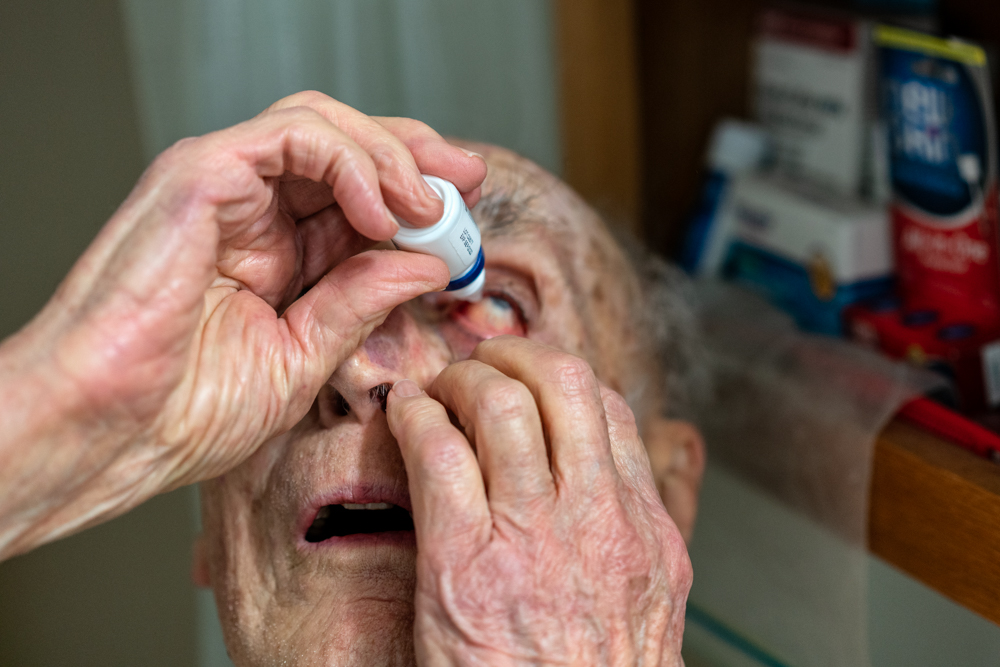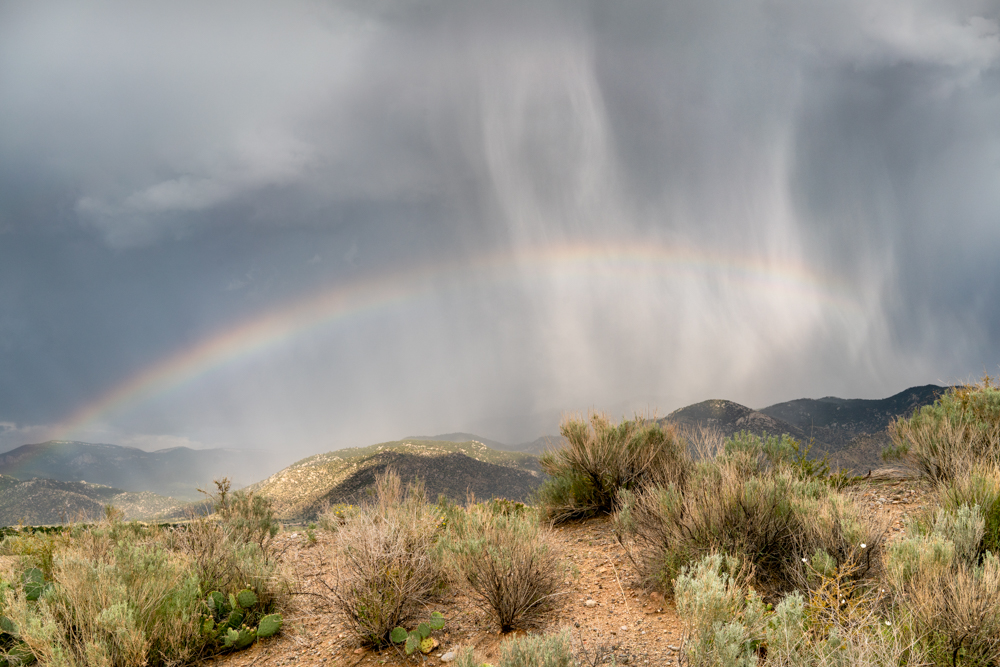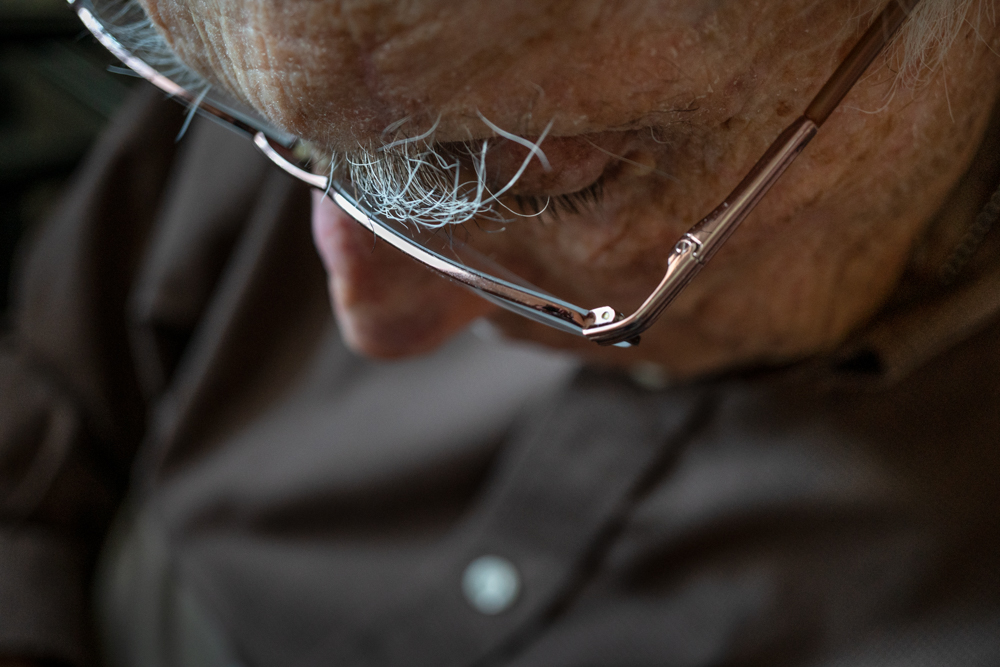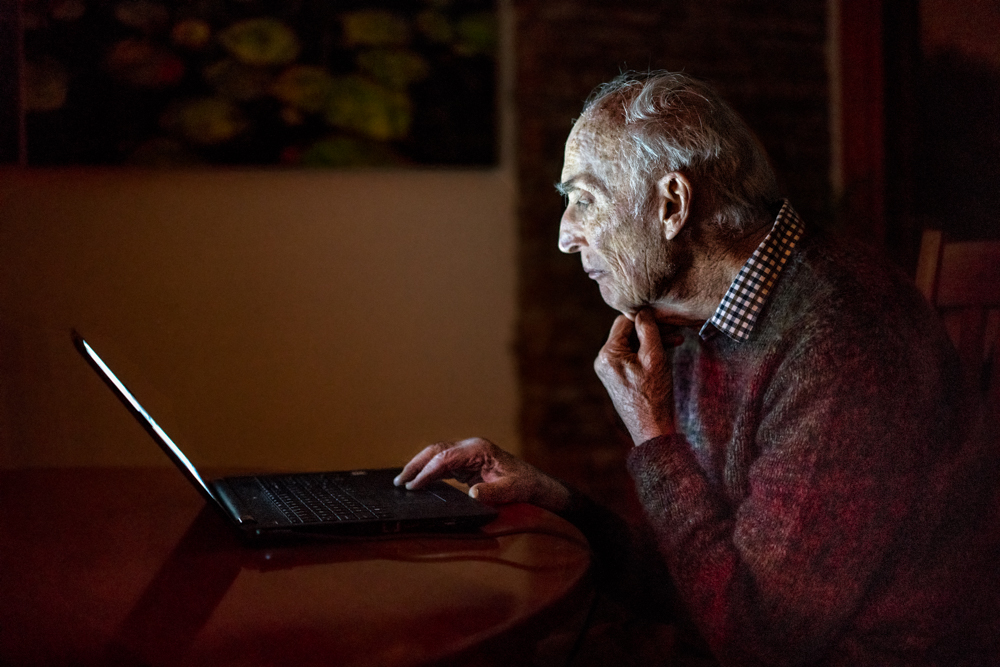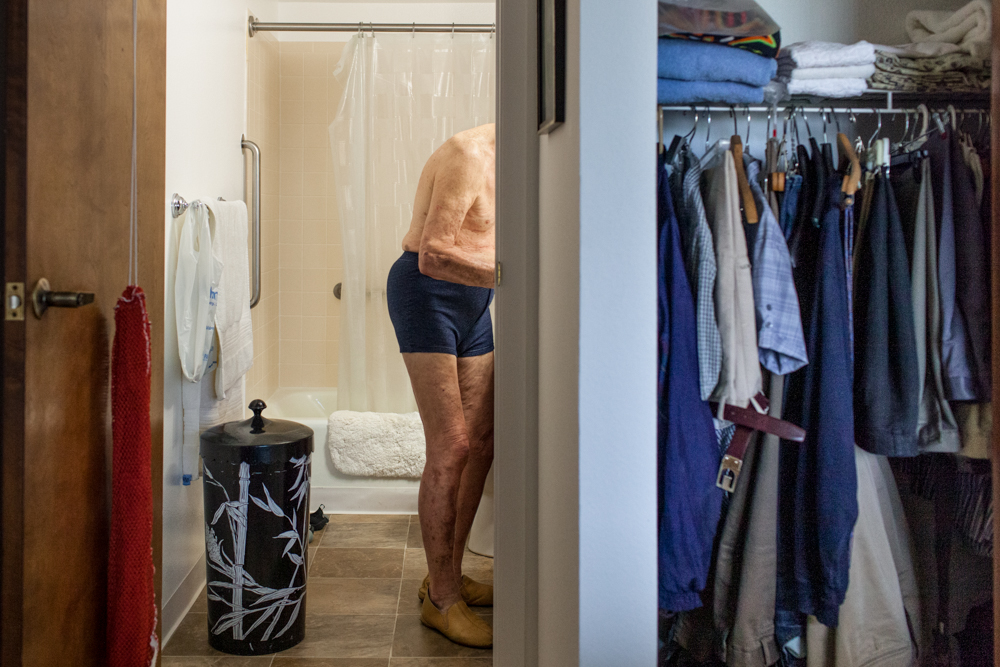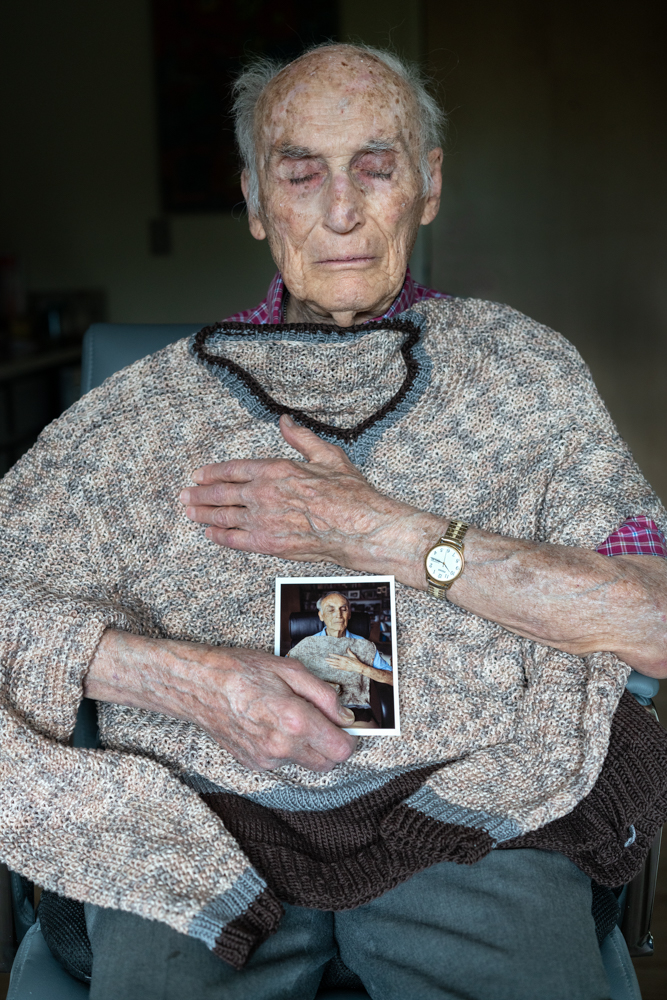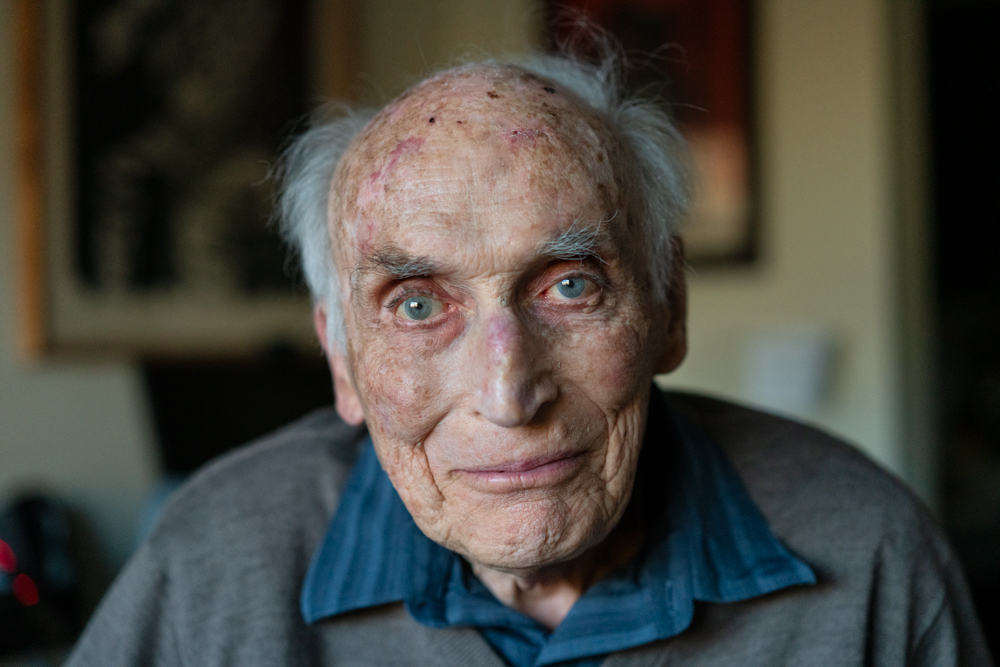Focus on Aging: Beate Sass: I Belong to You and You to Me
Introduction to Aging Series
I met Aline Smithson at a portfolio review in the fall of 2023 when I showed her my project about my father. When Aline generously offered me the opportunity to curate a collection of four other projects about aging that would be featured on Lenscratch alongside mine, I immediately thought about my friend, Ruth Steinberg. It was through the Kinship Photography Collective that I met Ruth and learned about her project, Hold Fast. It is a beautiful and intimate collection of photographs featuring her mother. We connected through our shared experience of photographing and supporting our parents, both of whom are 99 years old. I invited Ruth to join me on Lenscratch and to collaborate in recruiting photographers whose projects would align with our vision for the exhibit. Ruth and I wrote a project statement and posted a call for entry. We are thrilled to present our projects this week, alongside those by Carole Noronha, Patricia, McElroy, and Sarah Barker. – Beate Sass
Project Statement
By Beate Sass and Ruth Steinberg
When we invited artists to respond to our call for projects about aging, little did we anticipate that every photographer who submitted would be highlighting their parent’s story. This should not have come as a surprise. Statistically, we are living longer than previous generations, however, our social and health services have not caught up to this reality. The impact of this omission is that the care for our elders has fallen increasingly to their children to oversee or manage hands-on themselves. Although our experiences in photographing our loved ones are varied, one commonality we shared is that we became caregivers, to various degrees, to one or more parents. We also recognized that as the end of life neared, the time spent with our parents was even more precious, and yes, at times challenging and frustrating as we navigated a world of elder care that is tragically under-resourced.
People are living longer and healthier lives, yet elders often experience physiological changes in vision, hearing, mobility, and cognition which can lead to a loss or reduction in capacity. How we define capacity can be more generous than just considering the losses. Assistive devices, such as hearing aids and walkers, specialized senior programs, and hiring direct support professionals, enhance capacity and the enjoyment of life. We’ve witnessed many of our parents adapt to quieter pleasures and simpler joys, which gives those of us who support them an important lesson on how aging can still offer delight, no matter what stage of life one is in.
As photographers, we can show aging in all its expressions: there is no “one size fits all.” This series of five projects honors our parents, those still with us, and those who have passed. We celebrate how they lived, and how they continue to embrace life, despite their losses and challenges.
Beate Sass is a photo-based artist whose imagery is inspired by the Southwest region where she grew up and her experience as a mother and advocate of a daughter with a disability. Beate is not only drawn to capture the essence and beauty of her subjects but to also utilize her knowledge of visual storytelling to highlight and amplify the voices of those who are often overlooked. Most recently, Beate has turned her camera to the natural world and seeks to capture the peace and beauty found in wild places.
Beate’s photography has been featured in solo and joint exhibitions including The Museum of Contemporary Art of Georgia and the Southeast Museum of Photography. Her projects have been published in Lenswork, Oxford America, and South x Southeast Photomagazine. She has also self-published two zines and created a large-scale installation that was displayed in her hometown of Decatur, Georgia.
Instagram: @beatesassphoto
I Belong to You and You to Me
I have been photographing my father during my visits to Albuquerque, New Mexico since 2013, the year my mother died. I realized I had few photographs of my parents and felt the urgent need to photograph my father while he was still vital and enjoying life. In 2015, at the age of 92, my father made the painful decision to move from our family home, situated in the foothills of the Sandia Mountains, into a small apartment in a retirement community nearby. Seven years later, he transitioned into assisted living. I continued to photograph my father as he mourned for the house and landscape he loved. This ongoing project, I Belong to You and You to Me, explores my deep connection to the place where I grew up and the love and admiration for my father who has experienced loss, acceptance, and resilience in his elderhood. – Beate Sass
Interview with Beate Sass
By Ruth Steinberg
When did you begin your project on your dad and what was the impetus for the project?
In 2013, when my mother was at the end of her life, I was struck by the fact that I had not photographed either of my parents, aside from the occasional snapshot with their grandchildren. It also dawned on me that it would be the first time I would experience the death of someone so close to me. This realization stirred a deep desire to linger in my mother’s presence, and to embed her essence into my very being. With my mother’s permission, I reached for my camera. When my mother died, it wasn’t the images that I took of her that provided comfort, but the memory of the experiences we shared in the picture-making process. The pictures I had taken of my mother in the last few months of her life were hard for me to look at; they still are.
When my mother died, I decided that I wanted to photograph my father while he was still vital and doing all the things he loved. So, I started following him around with my camera when visiting him in New Mexico. I created his first formal portrait in 2013, in the swimming pool at his water aerobics class. He was 89 years old and it marked the beginning of this project. Ten years later, I am still photographing my father.
The landscape of New Mexico features largely in this story. How has living in New Mexico shaped your dad and impacted your image-making?
I grew up in New Mexico, so I have developed a deep connection to the land. My parents built their dream house in the foothills of the Sandia Mountains, at a time when access was via a dirt road and houses sprinkled the landscape. We had grand views of the mountains, enjoyed the stunning sunsets from our kitchen table, and marveled at the desert animals that frequented our yard. We all fell in love with this magical and beautiful place. Yet the landscape was not something I intentionally photographed until recently. I have never considered myself a landscape photographer nor did I believe that I could capture the vast beauty of the land in a photograph.
I started to photograph the landscape around my dad’s retirement community in New Mexico at a time when my father’s memory and physical health started to decline. As my dad’s needs increased, I found myself transported into more of a caregiving role during my visits. I knew that I needed to practice self-care while visiting my father so I would have the energy and patience to be with him during the day. I started taking long early morning walks in the foothills of the Sandia Mountains. I found solace and peace as I immersed myself in nature. I connected more deeply with the landscape as I began to photograph the land that moved me and my father. As I started to think about sequencing images for this project about my father, I realized that the landscape was, and had been, an integral part of our experience living in New Mexico, and that pictures of the landscape had to be included. When a place becomes deeply embedded in one’s being, the land becomes intertwined with the self, there is no entry or exit point. It’s just a continuous loop, where one ends the other begins. That’s the way it is for both my father and me.
How does your dad participate in the image-making process? Is he a subject, collaborator, or both?
My dad is almost always a collaborator and is the subject as well. If we are going to create a portrait we talk about the setting and how he might present himself. He also enjoys providing feedback on the images I have captured. When I am moved at the moment by the light or a certain gesture, I just take the picture, but he is usually aware that I have done so. Photographing my father with respect and dignity is at the forefront of my mind as I strive to create honest and authentic pictures.
How does your dad feel about your ongoing project?
My dad is tickled that I am interested in photographing him but each time I visit and pull out my camera he asks me what I find so compelling about doing so. He’ll say, “Don’t you have enough pictures of me by now?” I tell him that I can never have too many pictures of him. But the truth is, we have a lot of fun in the process of creating pictures. As it was with my mom, we laugh a lot and joke around. The process has brought us even closer together.
In 2018, he flew to Atlanta to attend an exhibition showcasing photographs from this project. At the reception, he was honored on his 94th birthday. He received a lot of attention from the attendees, and to this day, people who saw the exhibition inquire how he is doing and ask me to relay their regards. Even though he does not remember the individuals who are sending him greetings, he is flattered that people think of him.
How much longer do you intend to photograph your dad? Is there a point along his journey that you will not cross to make more images?
I don’t know how much longer I will be photographing my father. I believe I will recognize when the time comes to lay down my camera. That will happen when he is no longer cognizant of what I am doing or does not want to be photographed. I will not compromise his wishes or dignity. Also, if collaborating to take pictures is no longer enjoyable for either of us, I will stop.
How do you feel about making images of your dad, knowing life is drawing to a close?
I do feel a sense of urgency, to capture everything precious and meaningful about my father. Yet, the more recent pictures are bittersweet. Although the images may not reveal a decline in health to the casual viewer, I am acutely aware of the changes, and those pictures are a reminder of that. However, I cannot stop. Photographing him helps me to be more present in his life.
What have you learned about your aging in doing this project?
I hadn’t started to think deeply about my aging until the roles reversed between my father and myself. That happened about two years ago. He was always the one who I called for advice, the one I turned to if I was down in the dumps. He was my rock, and he seemed invincible until he wasn’t. Now, I have become the person my dad leans on. Yet, I continue to learn from him as I witness his resilience, despite losing almost everybody he has ever loved. I marvel at the grace he displays despite his physical and cognitive decline. And I’m in admiration of his passion to live as richly as possible and find beauty in the simplest of things, even though he rarely leaves the senior living community where he resides.
Ashton Applewhite talks about becoming an Old Person in Training in her book, This Chair Rocks. She writes, “Becoming an Old Person in Training means ditching preconceptions, looking at and listening carefully to the olders around us, and re-envisioning our place among them…It means thoughtful peeks through the periscope of an open mind at the terrain we’ll inhabit when we are finally old.” So, my father continues to be my teacher as I grapple with how my mind and body are changing in my sixth decade of life. I’m trying to live with more purpose and intent and to embrace that aging is living.
Ruth Steinberg is a photo-based artist who uses the camera as a tool to open doors to conversation, uplifting the voices of her subjects. Through visual storytelling she examines facets of dignity, resilience, and presence, with particular focus on the elderly. Her work has been shown across North America and internationally including the Karsh-Masson Gallery in Ottawa, LACP: Centre of Photography in California, PhotoPlace Gallery in Vermont, and FotoNostrum, Mediterranean House of Photography in Barcelona. In 2017, as part of an intergenerational chain of mentorship, Steinberg was selected to exhibit in Continuum: Karsh Award artists welcome a new generation. In 2022 she received the first place for the Figureworks Exhibition and in 2023 she was a Photolucida Critical Mass 200 finalist.
Instagram: @ruth_steinberg_photographs
Posts on Lenscratch may not be reproduced without the permission of the Lenscratch staff and the photographer.
Recommended
-
Martin Stranka: All My StrangersDecember 14th, 2025
-
Interview with Maja Daniels: Gertrud, Natural Phenomena, and Alternative TimelinesNovember 16th, 2025
-
MG Vander Elst: SilencesOctober 21st, 2025
-
Photography Educator: Josh BirnbaumOctober 10th, 2025
-
Aiko Wakao Austin: What we inheritOctober 9th, 2025

